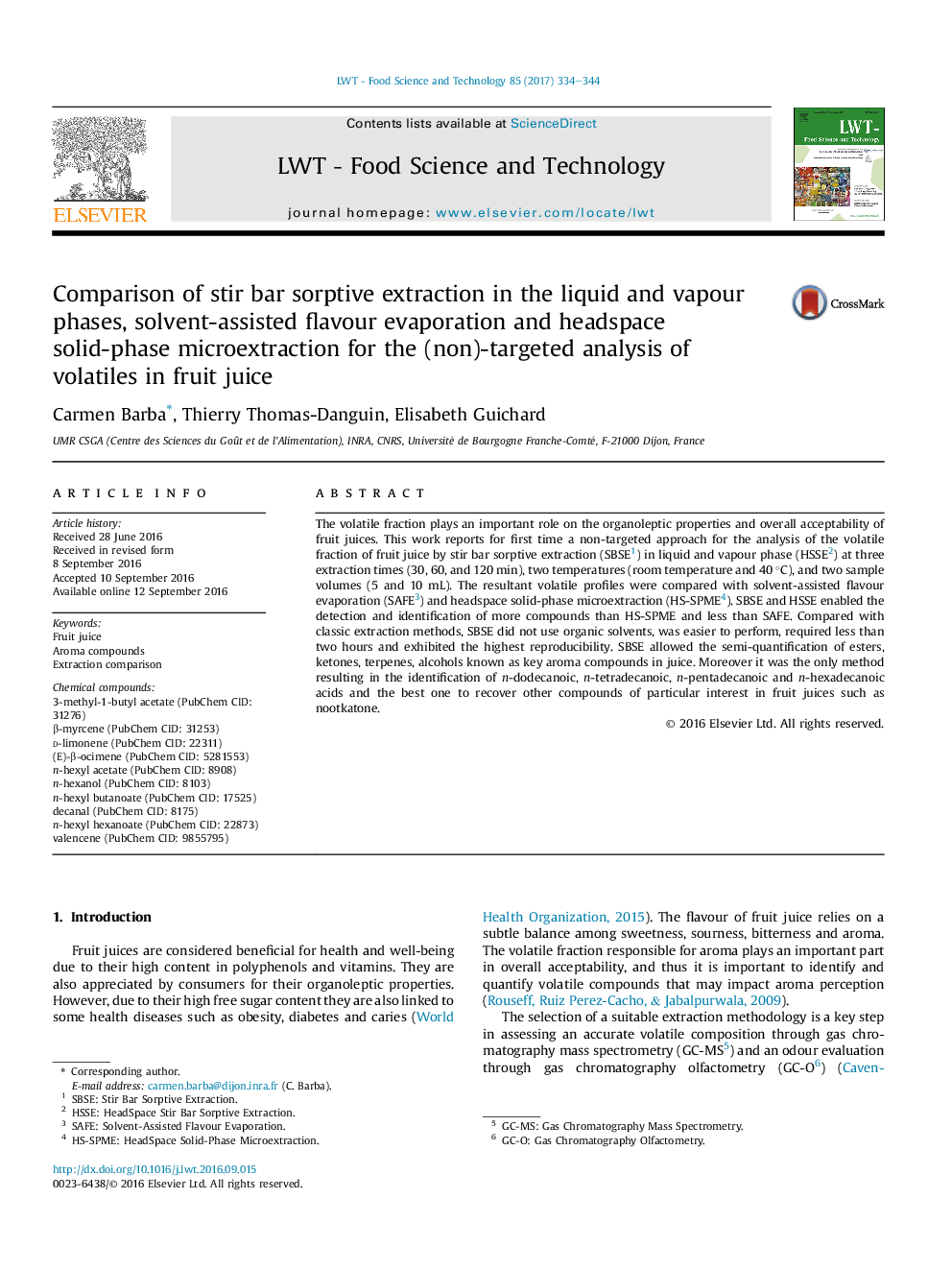| Article ID | Journal | Published Year | Pages | File Type |
|---|---|---|---|---|
| 5768387 | LWT - Food Science and Technology | 2017 | 11 Pages |
â¢Selection of a suitable extraction method for fruit juice volatile compounds.â¢Volume, temperature, extraction time have an impact on the recovery.â¢Higher reproducibility of stir bar sorptive extraction in liquid than in vapour mode.â¢Stir bar sorptive extraction was rapid and easy to perform.
The volatile fraction plays an important role on the organoleptic properties and overall acceptability of fruit juices. This work reports for first time a non-targeted approach for the analysis of the volatile fraction of fruit juice by stir bar sorptive extraction (SBSE1) in liquid and vapour phase (HSSE2) at three extraction times (30, 60, and 120 min), two temperatures (room temperature and 40 °C), and two sample volumes (5 and 10 mL). The resultant volatile profiles were compared with solvent-assisted flavour evaporation (SAFE3) and headspace solid-phase microextraction (HS-SPME4). SBSE and HSSE enabled the detection and identification of more compounds than HS-SPME and less than SAFE. Compared with classic extraction methods, SBSE did not use organic solvents, was easier to perform, required less than two hours and exhibited the highest reproducibility. SBSE allowed the semi-quantification of esters, ketones, terpenes, alcohols known as key aroma compounds in juice. Moreover it was the only method resulting in the identification of n-dodecanoic, n-tetradecanoic, n-pentadecanoic and n-hexadecanoic acids and the best one to recover other compounds of particular interest in fruit juices such as nootkatone.
